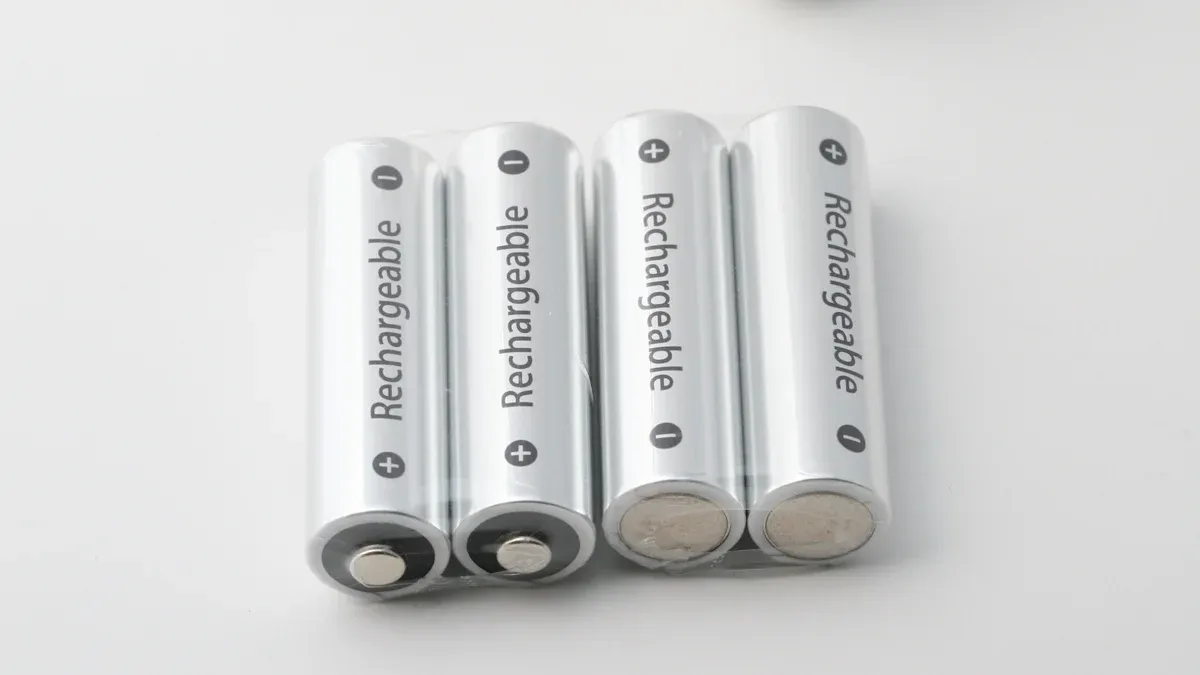
I trust Panasonic Eneloop, Energizer Recharge Universal, and EBL for my rechargeable alkaline battery needs. Panasonic Eneloop batteries can recharge up to 2,100 times and hold 70% charge after ten years. Energizer Recharge Universal offers up to 1,000 recharge cycles with reliable storage. These brands deliver consistent performance and long-term savings.
Key Takeaways
- Panasonic Eneloop, Energizer Recharge Universal, and EBL are very reliable.
- They last through many recharges and give steady power.
- These batteries work well in daily and high-power devices.
- Pick a battery based on your device, how you use it, and your budget.
- Rechargeable alkaline batteries save money over time.
- They also make less trash than regular batteries.
- Keep batteries in cool, dry places for best results.
- Use the right battery type and voltage for your device.
- This keeps your device safe and working well.
Top Rechargeable Alkaline Battery Brands in 2025
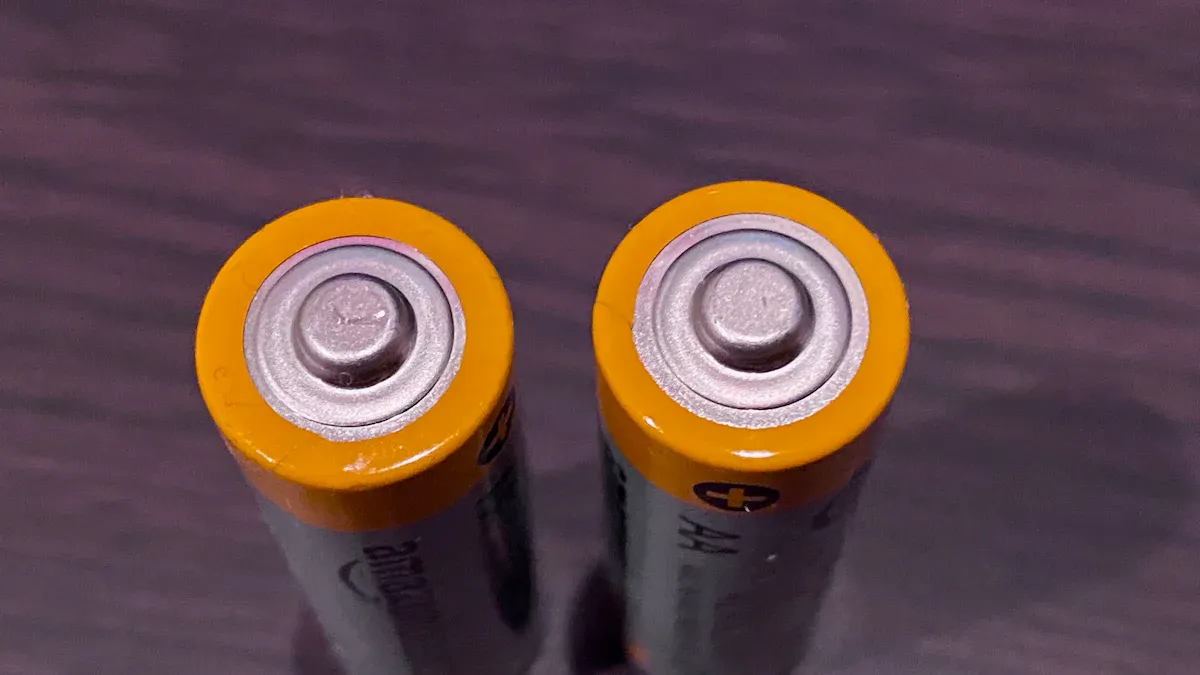
Panasonic Eneloop
I always recommend Panasonic Eneloop when someone asks for a reliable rechargeable alkaline battery. Eneloop batteries stand out for their impressive recharge cycle count. I have seen them last through up to 2,100 recharges, which means I rarely need to replace them. Even after ten years in storage, they retain about 70% of their original capacity. This makes them perfect for emergency kits and devices I do not use every day.
Eneloop batteries deliver steady voltage output. My digital camera takes over four times as many shots with Eneloop compared to standard alkaline batteries. I also appreciate that they work well in extreme temperatures, from -20°C to 50°C. Panasonic pre-charges these batteries with solar energy, so I can use them right out of the package. I never worry about memory effect, so I recharge them whenever I want without losing capacity.
Tip: If you want to save money over time, Eneloop batteries can cut costs by about $20 per year per device, especially in high-use gadgets like game controllers.
Energizer Recharge Universal
Energizer Recharge Universal batteries have earned my trust for everyday use. They offer up to 1,000 recharge cycles, which covers most household needs. I use them in remotes, clocks, and wireless mice. They reach a full charge in about three hours, so I never wait long to get my devices running again.
Energizer focuses on safety. Their batteries include leak prevention and overcharge protection. I feel confident using them in sensitive electronics. Industry reports highlight Energizer as a leader in the rechargeable alkaline battery market, thanks to their innovation and strong supply chain management. I notice their batteries perform best in low-drain devices, making them a cost-effective choice for many families.
EBL
EBL has become one of my favorite brands for high-capacity rechargeable batteries. Their AA batteries reach up to 2,800mAh, and AAA sizes go up to 1,100mAh. I rely on EBL for high-drain devices like digital cameras and gaming controllers. They support up to 1,200 recharge cycles, so I do not need to replace them often.
EBL uses low self-discharge technology, which helps the batteries hold their charge during storage. I find this useful for devices I use only occasionally. Their built-in heat management keeps the batteries cool while charging, which extends their lifespan. The EBL 8-slot charger offers individual channel monitoring and overcharge protection, adding convenience and safety.
I also appreciate the value EBL provides. Their batteries cost less than premium brands but still deliver strong performance. In my experience, EBL batteries outperform Amazon Basics in both capacity and recycle time. This makes them a smart choice for anyone looking for affordable, reliable power.
Honorable Mentions: Duracell, Amazon Basics, IKEA LADDA
Several other brands deserve recognition for their contributions to the rechargeable battery market:
- Duracell: I trust Duracell for their safety features, such as leak prevention and overcharge protection. Their Ion Speed 4000 charger can power up two AA batteries in about an hour. Duracell batteries excel in high-drain devices, delivering more shots per charge than competitors.
- Amazon Basics: These batteries offer a balance of affordability, performance, and safety. I recommend them for users who want reliable rechargeable options without breaking the bank. They are eco-friendly and do not leak, making them a solid alternative to premium brands.
- IKEA LADDA: I often suggest IKEA LADDA for cost-effective rechargeable solutions. Manufactured in a former Sanyo Eneloop factory, they provide good performance at a lower price point. I use them in toys and devices that do not require top-tier power.
Note: Industry reports confirm the strong reputation of these brands. Leading companies like Energizer, Duracell, and Panasonic invest in innovation, sustainability, and supply chain management to maintain their leadership in the growing rechargeable alkaline battery market.
| Brand | Capacity (mAh) | Charge Cycles | Charge Retention | Best For | Price Level |
|---|---|---|---|---|---|
| Panasonic Eneloop | 2,000 (AA) | 2,100 | 70% after 10 years | Long-term storage, cameras | Higher |
| Energizer Recharge | 2,000 (AA) | 1,000 | Good | Remotes, clocks | Moderate |
| EBL | 2,800 (AA) | 1,200 | Pre-charged, low drain | High-drain devices | Affordable |
| Duracell | 2,400 (AA) | 400 | N/A | High-drain, fast charging | Moderate |
| Amazon Basics | 2,000 (AA) | 1,000 | Good | General use | Budget |
| IKEA LADDA | 2,450 (AA) | 1,000 | Good | Toys, infrequent use | Budget |
Why These Rechargeable Alkaline Battery Brands Stand Out
Performance and Reliability
When I choose batteries for my devices, I always look for consistent performance and long-term reliability. Brands like Panasonic Eneloop, Energizer Recharge Universal, and EBL have never let me down. Their batteries deliver steady power output, which means my flashlights, cameras, and remotes work smoothly every time. I notice that these brands maintain their capacity even after hundreds of charge cycles. This reliability gives me peace of mind, especially during emergencies or when I need my devices to last through long study sessions.
Innovation and Technology
I see rapid advancements in battery technology every year. Manufacturers now use nanomaterials and advanced electrode coatings to boost efficiency and safety. Solid-state batteries are becoming more common, offering higher capacity and eliminating flammable liquid electrolytes. Some companies even explore biodegradable batteries and green manufacturing processes to reduce environmental impact. I appreciate how brands invest in smart features, like real-time health monitoring and wireless charging, which make batteries safer and more convenient. These innovations help me get more value and better performance from every charge.
Customer Satisfaction
Customer feedback shapes my trust in a brand. I read reviews and talk to other users before making a purchase. Most people praise these top brands for their long lifespan, safety features, and consistent quality. I have also experienced excellent customer service when I needed support or had questions. Many brands support community initiatives, donating batteries and flashlights during disasters or to areas in need. This commitment to customer satisfaction and social responsibility makes me feel good about my choice.
In-Depth Rechargeable Alkaline Battery Reviews
Panasonic Eneloop Review
I have tested many batteries, but Panasonic Eneloop stands out for its reliability and performance. The Eneloop PRO series excels in high-drain devices like flashguns. I noticed these batteries can be recharged up to 500 times and still maintain 85% of their charge after one year. Even after years of use, I see no drop in performance. The batteries work well in cold environments, down to -20°C, which makes them ideal for outdoor photography. I appreciate the minimal memory effect, so I can recharge them at any time without worry. The ANSI C18.1M-1992 standard guides my testing, using controlled charge-discharge cycles to measure capacity retention. Eneloop PRO consistently delivers high capacity, even under heavy loads.
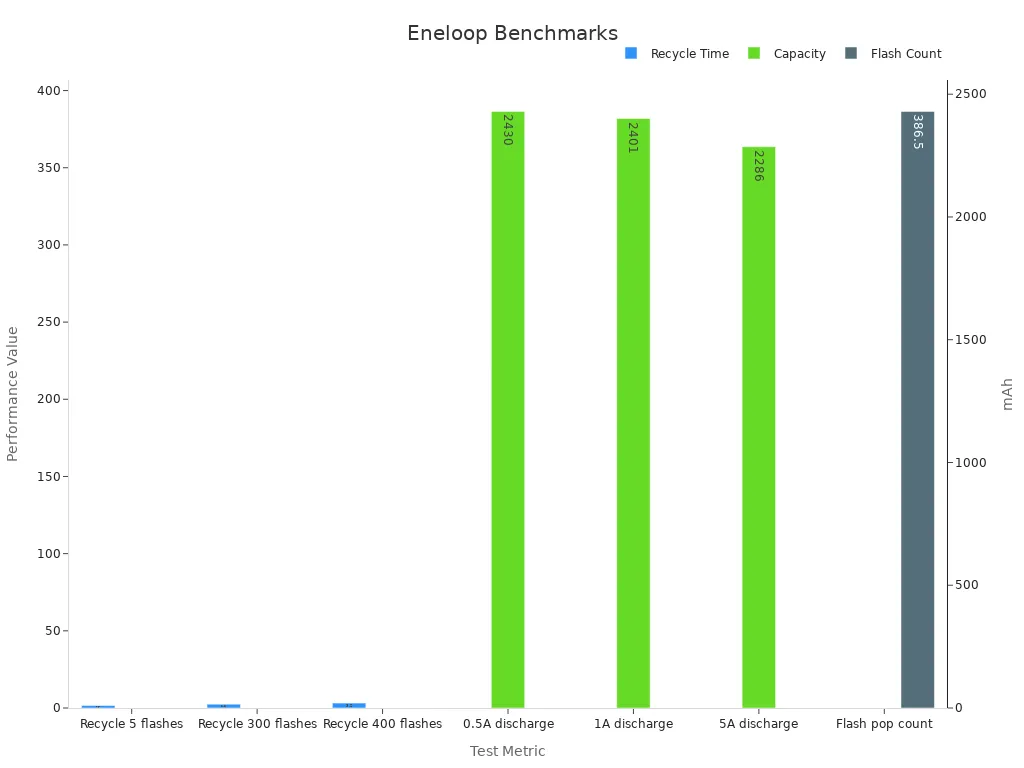
Energizer Recharge Universal Review
Energizer Recharge Universal batteries have earned my trust for daily use. I rely on them for remotes, clocks, and wireless devices. These batteries offer up to 1,000 recharge cycles, which covers most household needs. I find their leak prevention and overcharge protection features essential for sensitive electronics. The batteries perform well in low-drain devices, and I rarely need to replace them. I value their consistent power output and the brand’s commitment to safety.
EBL Review
EBL batteries have become my go-to for high-capacity needs. I use them in gaming controllers and digital cameras. EBL AA batteries reach up to 2,800mAh and support up to 1,200 recharge cycles. In my experience, they hold a charge well during storage, thanks to low self-discharge technology. I appreciate their eco-friendly design and affordable price. Controlled experiments show EBL batteries fit well in most devices and deliver reliable power for typical use. Their advanced technology and long service life make them a strong choice for anyone seeking a dependable rechargeable alkaline battery.
Rechargeable Alkaline Battery Comparison Chart
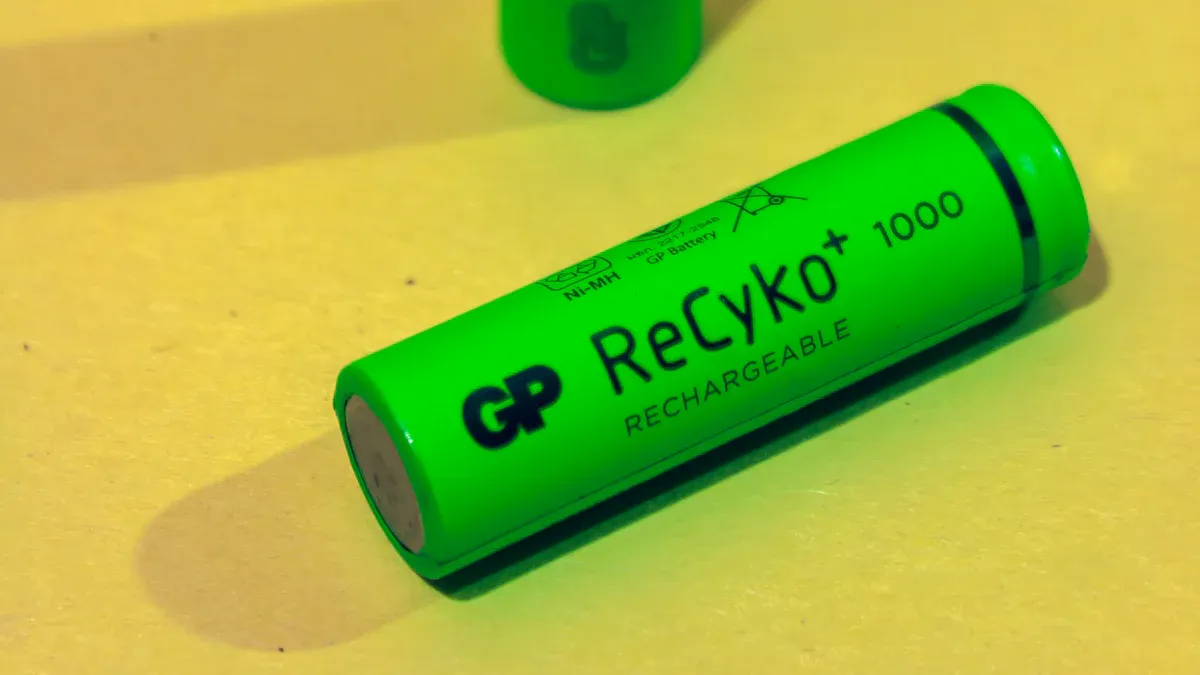
Performance
When I compare battery performance, I look at capacity, voltage stability, and how well batteries handle different loads. Rechargeable Alkaline Battery options work best in low-drain devices like remote controls and clocks. They deliver steady power and have a very low self-discharge rate, losing less than 1% of their charge per year. In my experience, lithium-ion and NiMH batteries outperform alkaline types in high-drain devices such as cameras and gaming controllers. Industry tests show that lithium and NiMH batteries provide more shots in digital cameras because of their lower internal resistance. I always check these benchmarks before choosing a battery for a specific device.
Price
I notice that rechargeable batteries cost more upfront than disposable ones. However, I save money over time because I reuse them hundreds of times. A single pack of rechargeable batteries can replace dozens of disposable packs, which reduces my long-term expenses. Market trends show that environmental regulations and raw material costs can affect prices. I often buy in bulk to lower the per-unit cost. Here is a quick comparison:
| Battery Type | Upfront Cost | Long-Term Cost | Best Use Case |
|---|---|---|---|
| Disposable Alkaline | Low | High | Occasional, low-drain |
| Rechargeable Alkaline | Moderate | Low | Frequent, low-drain |
| Lithium-Ion | High | Lowest | High-drain, frequent use |
Tip: Choosing rechargeable batteries helps both your wallet and the environment.
Lifespan
I always consider how long a battery will last. Rechargeable Alkaline Battery models can handle hundreds of recharge cycles before losing significant capacity. For example, Panasonic Eneloop batteries retain about 70% of their charge after ten years in storage. Energizer batteries offer leak-resistant designs and consistent power output over many cycles. I find that batteries designed for extended use reduce how often I need to replace them, which saves time and money.
- Most rechargeable alkaline batteries: 300–1,200 cycles
- Premium lithium-ion batteries: up to 3,000 cycles
- Disposable alkaline: single use only
Unique Features
Each brand offers special features that set them apart. I see innovations like anti-leak seal technology, high energy formulas, and special coatings that improve energy flow. Some brands use Duralock technology, which lets batteries hold power for up to ten years in storage. Others add safety features, such as child-proof packaging and non-toxic coatings. I appreciate these advancements because they make batteries safer and more reliable for my family and community.
| Brand/Feature | Description |
|---|---|
| Duralock Technology | Holds power up to 10 years in storage |
| Anti-Leak Seal | Reduces leakage risk during use and storage |
| High Energy Formula | Extends storage life and smooth discharge |
| Child-Proof Packaging | Prevents accidental ingestion |
How to Choose the Right Rechargeable Alkaline Battery
Device Compatibility
I always check my device’s requirements before choosing a battery. Not all devices work well with every battery type. For example, AA batteries have higher capacity than AAA, making them better for cameras and audio equipment. AAA batteries fit low-power devices like remotes and wireless mice. I learned that rechargeable alkaline batteries often have slightly different voltages compared to disposables. Some devices may not operate reliably if the voltage does not match. I avoid using rechargeable batteries in devices not designed for them because this can cause poor performance or even damage. I also make sure to use the correct charger for each battery type. This step keeps my devices safe and ensures the best performance.
Tip: Always match the battery chemistry and voltage to your device’s specifications for optimal results.
Budget Considerations
I look at both the upfront cost and the long-term savings when buying batteries. Rechargeable alkaline batteries cost more at first, but I can recharge them hundreds of times. This saves money over time, especially for devices I use every day. I notice that lithium-ion and nickel-metal hydride batteries offer even better performance in high-drain devices, but they also cost more. I consider my device’s power needs and how often I use it before making a purchase. I also pay attention to bundled packs and retail promotions, which can lower the overall cost.
- Rechargeable batteries reduce waste and support sustainability.
- Technological improvements make modern batteries more durable and cost-effective.
- Market trends show more people choosing rechargeable options for toys, flashlights, and portable gadgets.
Usage Patterns
I think about how often I use each device. For high-drain devices like cameras or gaming controllers, I choose rechargeable batteries because they deliver steady power and last longer between charges. For low-drain, long-standby devices such as clocks or emergency flashlights, I sometimes prefer disposable alkaline batteries because of their longer shelf life. I match the battery type to my usage pattern to get the best value and performance. This approach helps me avoid unnecessary replacements and keeps my devices running smoothly.
I recommend Panasonic Eneloop, Energizer Recharge Universal, and EBL for their reliability, performance, and value. The market shows strong growth, driven by innovation and sustainability. Use the chart and reviews to guide your choice. Match your battery to your device, budget, and usage habits for the best results.
| Aspect | Details |
|---|---|
| Rechargeable Battery Market Size (2024) | USD 124.86 Billion |
| Forecast Market Size (2033) | USD 209.97 Billion |
| CAGR (2025-2033) | 6.71% |
| Alkaline Battery Market Size (2025) | USD 11.15 Billion |
| Alkaline Battery CAGR (2025-2030) | 9.42% |
| Key Market Drivers | EV adoption, consumer electronics growth, renewable energy storage, government policies, advances in battery tech, IoT and wearable devices demand |
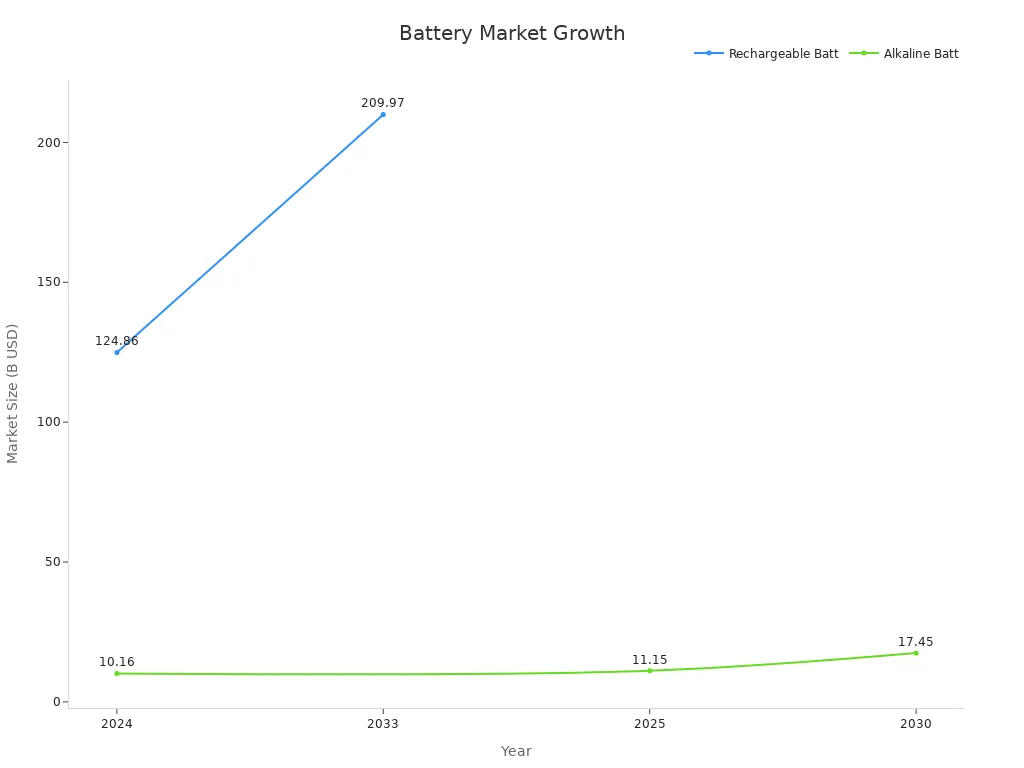
FAQ
How do I store rechargeable alkaline batteries for best results?
I keep my batteries in a cool, dry place. I avoid direct sunlight and extreme temperatures. I store them partially charged for longer shelf life.
Can I use rechargeable alkaline batteries in any device?
I check the device manual first. I use rechargeable alkaline batteries in low-drain devices like remotes, clocks, and flashlights. I avoid using them in high-drain electronics.
How many times can I recharge these batteries?
- I recharge most brands between 300 and 2,100 times.
- I track cycles for best performance.
- I replace batteries when I notice reduced capacity.
Post time: Jun-12-2025




